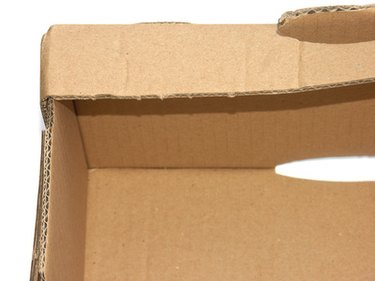
Blown-in cellulose insulation refers to shredded and pulverized paper boxes and newsprint that are installed in walls and attics with the help of pneumatic blowing machines for the purpose of heat and sound insulation. The substance is treated with fire-retardant borates and is labeled as being effective against insects, including earwigs, cockroaches and termites, by the Environmental Protection Agency. Cellulose insulation contains no harmful products such as those found in other types of insulation, including asbestos, fiberglass, ammonium sulfate and formaldehyde. However, blown-in cellulose insulation is associated with a few serious hazards that must be appropriately assessed before it is used as an insulating material.
Combustion
Video of the Day
Cellulose insulation became popular in the 1920s, when marketers touted its numerous sound and heat insulating properties. However, its use led to numerous attic fires. Electrical short circuits and heat producing devices were almost always the cause, igniting the cellulose material and causing home fires. The potential burning hazards of cellulose insulation soon caught on and government agencies passed stringent regulations on their safety in the 1970s. Cellulose, being the base form of paper, is an organic material and, as with other organic materials, it is liable to burn. Buildings whose walls are insulated with older blown-in cellulose insulation pose serious fire hazards since the material was prepared before cellulose fire-safety standards became the norm.
Video of the Day
Deterioration
Blown-in cellulose insulation is expected to be treated with appropriate fire-retardant chemicals. These fire retardants tend to deteriorate and lose their effectiveness over time. Research conducted by the California Bureau of Home Furnishings and Thermal Insulation reported that most cellulose insulation samples failed the fire safety test within six months of installation.
According to Carson Dunlop in the book "Principles of Home Inspection," cellulose insulation readily absorbs water. This further affects and compromises its insulating properties. Moreover, there is evidence that water in blown-in cellulose insulation affects its fire-retardant properties and makes it susceptible to burning. According to Carson Dunlop, water oftentimes entirely eliminates fire retardants.
According to Top-Quality Insulation, certain chemicals applied to blown-in cellulose insulation tend to corrode wires and pipes, leading to their deteriorating and posing additional safety hazards.
Allergens
Blown-in cellulose insulation poses a unique hazard to individuals who are allergic to newspaper ink and chemical fire retardants. Boron chemicals, such as borax and boric acid, further aggravate matters and cause a host of respiratory problems in the elderly and infants. According to Fred A. Stitt in the "Ecological Design Handbook," homeowners allergic to ink fumes and newsprint must avoid cellulose insulation.